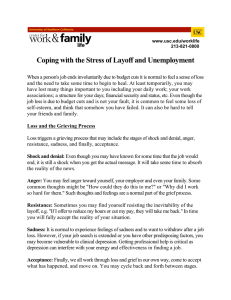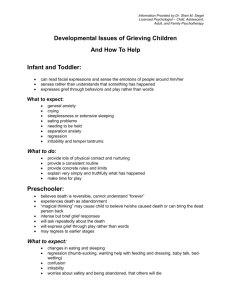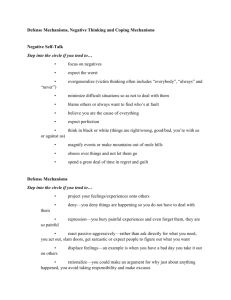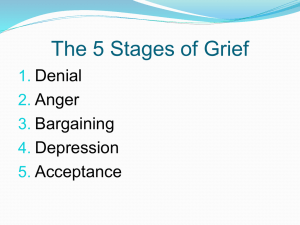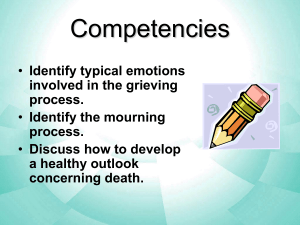ADOLESCENT PERSPECTIVES ON DEATH
advertisement
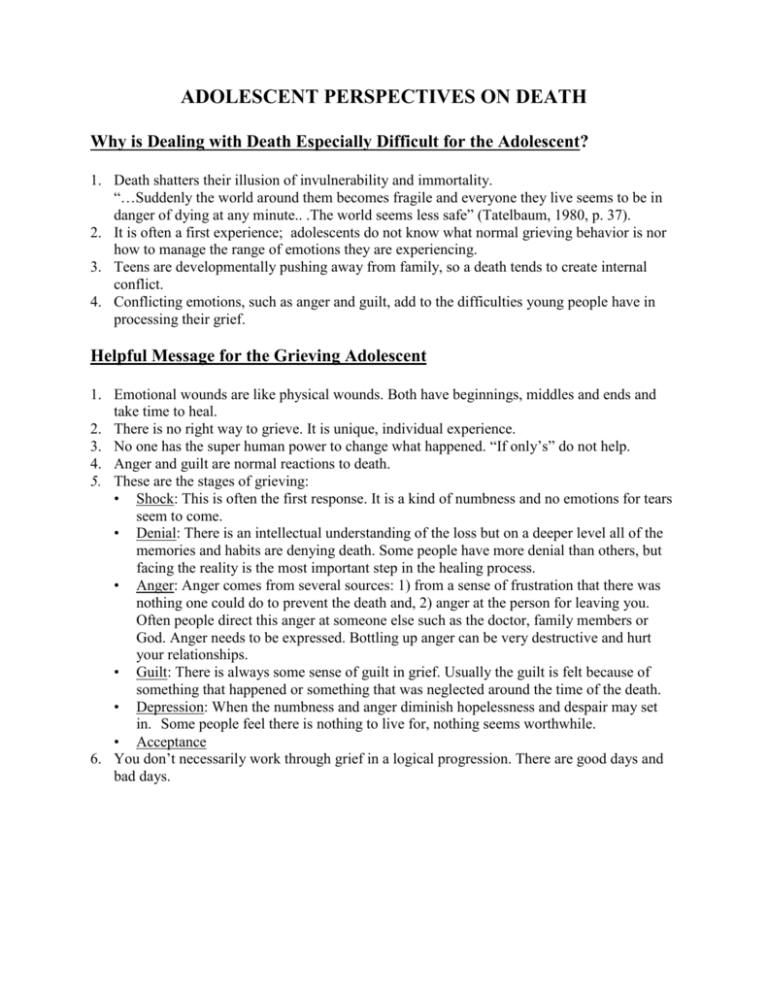
ADOLESCENT PERSPECTIVES ON DEATH Why is Dealing with Death Especially Difficult for the Adolescent? 1. Death shatters their illusion of invulnerability and immortality. “…Suddenly the world around them becomes fragile and everyone they live seems to be in danger of dying at any minute.. .The world seems less safe” (Tatelbaum, 1980, p. 37). 2. It is often a first experience; adolescents do not know what normal grieving behavior is nor how to manage the range of emotions they are experiencing. 3. Teens are developmentally pushing away from family, so a death tends to create internal conflict. 4. Conflicting emotions, such as anger and guilt, add to the difficulties young people have in processing their grief. Helpful Message for the Grieving Adolescent 1. Emotional wounds are like physical wounds. Both have beginnings, middles and ends and take time to heal. 2. There is no right way to grieve. It is unique, individual experience. 3. No one has the super human power to change what happened. “If only’s” do not help. 4. Anger and guilt are normal reactions to death. 5. These are the stages of grieving: • Shock: This is often the first response. It is a kind of numbness and no emotions for tears seem to come. • Denial: There is an intellectual understanding of the loss but on a deeper level all of the memories and habits are denying death. Some people have more denial than others, but facing the reality is the most important step in the healing process. • Anger: Anger comes from several sources: 1) from a sense of frustration that there was nothing one could do to prevent the death and, 2) anger at the person for leaving you. Often people direct this anger at someone else such as the doctor, family members or God. Anger needs to be expressed. Bottling up anger can be very destructive and hurt your relationships. • Guilt: There is always some sense of guilt in grief. Usually the guilt is felt because of something that happened or something that was neglected around the time of the death. • Depression: When the numbness and anger diminish hopelessness and despair may set in. Some people feel there is nothing to live for, nothing seems worthwhile. • Acceptance 6. You don’t necessarily work through grief in a logical progression. There are good days and bad days. Suggestions for Helping Your Student and Their Friends 1. Crying is a normal reaction. Provide tissues. 2. Recognize that your student may be very quiet or appear in a daze; they are often the most traumatized. Be alert to this possibility and report suspicions to the student’s counselor. 3. Teens turn to peers for comfort, usually a rather ineffective support group, so be sure to initiate conversations with your student. 4. Some helpful responses to distressed students are: • I can see that you are really hurting. • It’s very hard to accept the death of someone you knew well. • I know…it just seems unbelievable. • It really hurts, doesn’t it? • It is especially hard when there are many unanswered questions. Some responses that are not helpful are: • You will feel better tomorrow. • Just don’t think about it now. • A friend of mine died when I was young and I got over it. • It’s hard, but we all have to face the death of someone close at one time or another. 5. Listen, Listen, Listen. Be ready for any type of question, but don’t be afraid of not knowing the answer. “I am really sorry, but I just don’t know.” 6. If your student continues to experience the grieving process longer than his/her peers, contact your family physician or a school counselor can recommend grief counselors in the community.
